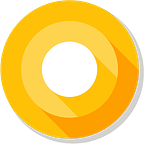Prototyping in product design
Quite often than not, there is someone who comes up with an idea for a product. They firmly believe that it’s going to change the way the world operates. They want to create a mobile app because that’s the trend today. They choose a technology stack and dive straight into development. After many sleepless nights and cups of caffeine, they decide it’s about time. Launch time. The app’s published on the store and the wait for the downloads to spike begins. Unfortunately, most apps don’t see the spike they desire so much.
‘Maybe the world isn’t ready for my idea, yet.’
One big reason why most products fail? A lack of customer desirability testing.
A prototype is usually described as a miniature model of something big that you want to do. However, especially in development, people want to avoid that phase. Most consider it a waste of time and effort. Something that can’t be reused for the future.
A prototype isn’t merely a high fidelity wireframe that designers share and developers can get working on. A prototype defines many other things that define the success of the engineering output. Usually, when we think of an idea, our mind goes through a multiplying effect. We imagine everything from how it looks, to how the customer’s face is when they are using it, to how you win the award for the best app of the year. However, how do you translate these emotions to your business partner or to your designers or to your beloved engineering team?
Quickly transforming an idea into a few sketches gets everyone on board your concept.
Does this sketch always have to be a mobile app screen? No. It can even be a cartoon. The real purpose of it is to provide a platform for others to question your idea and evolve it.
After a few discussions, you have a prototype that your team believes in as well. How do you validate it? This is when you talk to other people external to your team with your prototype. You test your idea with actual customers and gauge if it is actually an idea worth building.
After a few iterations of customer testing, you have a refined idea that you think is solving the real problem. This is the point where you need to decide if this is going to be an app or a non-digital service. You sit with your team and your customers to gauge this.
For the purpose of this article, let’s assume your team has decided to go ahead with a mobile application from customer feedback. A prototype at this stage helps establish well-defined steps to get the actual problem solved. These could be screens of an application with a well-defined Information Architecture. The prototype also helps you maintain brand and design consistency.
Now you are in a stage for the engineering team to get their hands dirty and build the app. After a high energy development sprint, you have an app ready to published and consumed. Will it face immediate success? Not always. However, you are in a much better position to understand where things went wrong and make adjustments to make it a success.
Most products fail due to a lack of synchronisation between customers and the product team. A prototype establishes a platform for discussion and a shot at success. So let’s get prototyping !!!
